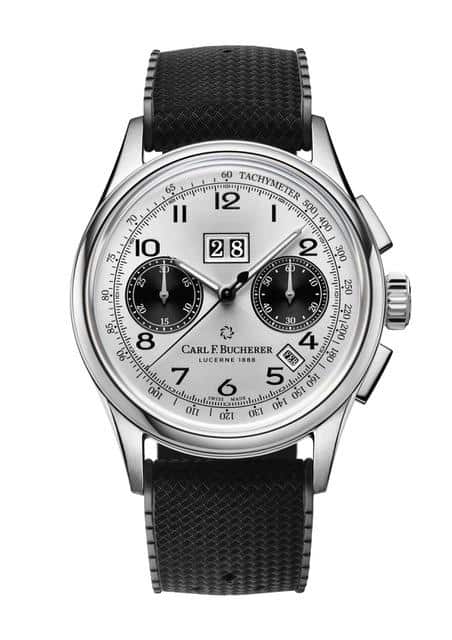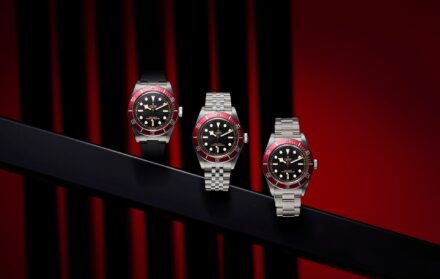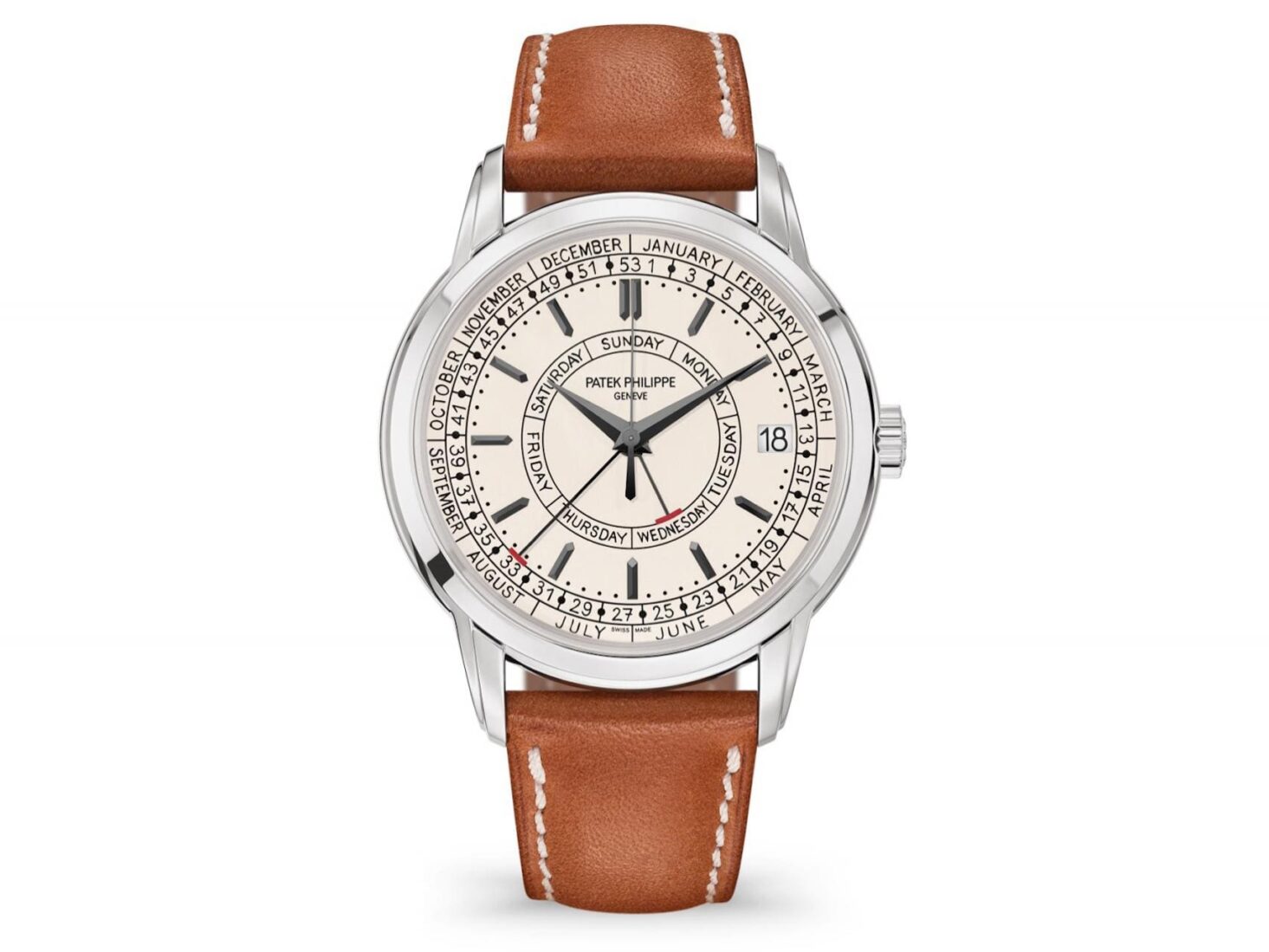
Show Time: The Best of Baselworld 2019
The world’s largest watch show was a somewhat smaller affair this year, following the decision by Swatch Group – parent company to Omega, Blancpain, Breguet and Longines – not to attend the Basel-based fair. While pre-show
Breitling Premier 01 Norton, £6,700
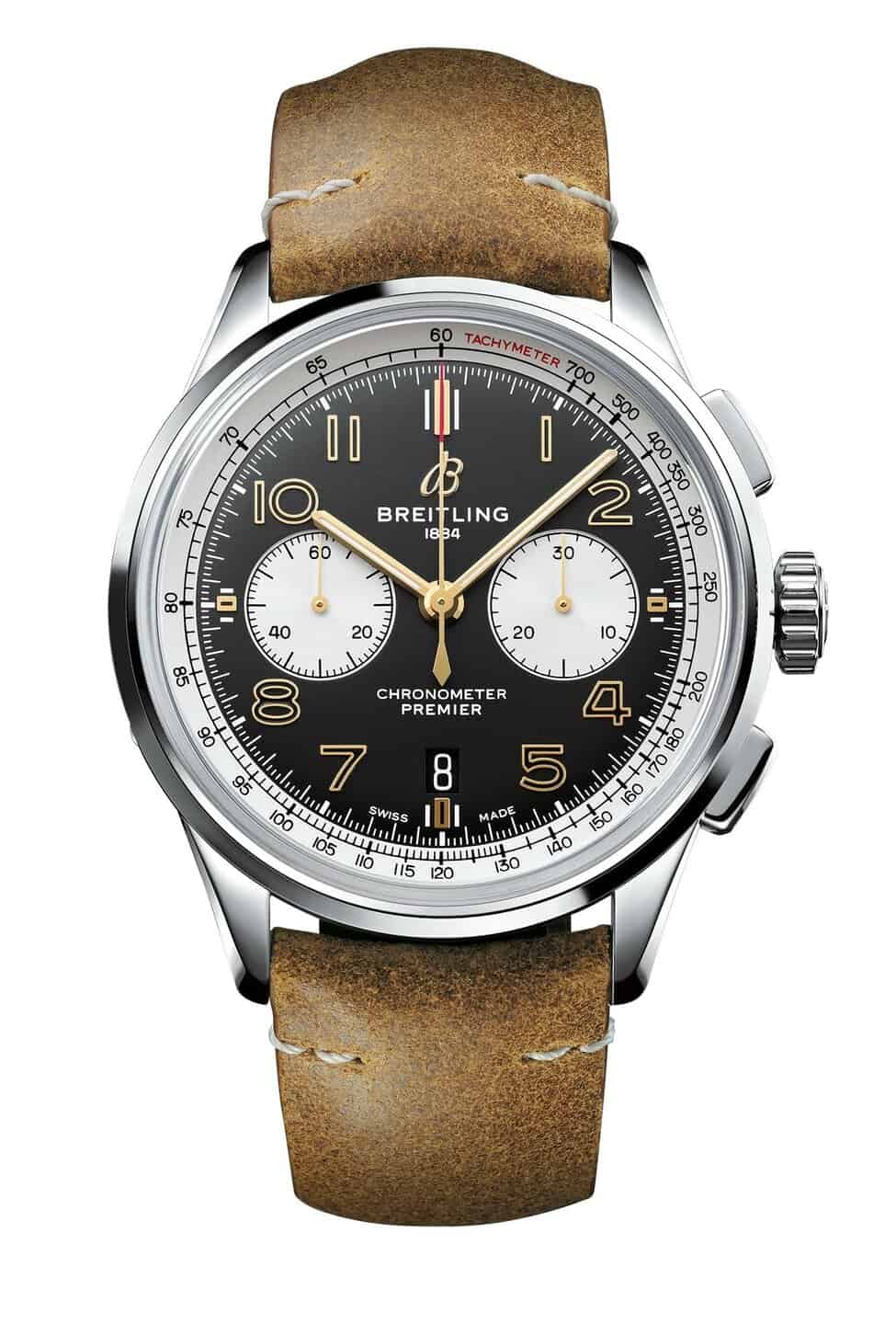
Breitling’s partnership with the legendary British motorcycle marque feels so natural that it wouldn’t be surprising to discover it were celebrating its 10th anniversary rather than its first – both brands bringing with them a sense of the adventurous, an authentic heritage and their own diehard fanbases. Breitling, under the leadership of CEO Georges Kern, is looking to diversify its offering and its customer base, with associations other than fast jets and slide-rule bezels. Norton represents at least part of its effort to establish a new front on land and, if the limited-edition Premier 01 Norton is anything to go by, Kern has every chance of pulling off a strategic masterstroke. Housing an in-house, COSC-certified B01 automatic chronograph movement with a 70-hour power reserve inside its 42mm stainless steel case, the Premier 01 Norton opts for a reverse panda dial configuration with a white chapter ring and gold Arabic numerals.
breitling.com
Bulgari Octo Finissimo Chronograph GMT, POA
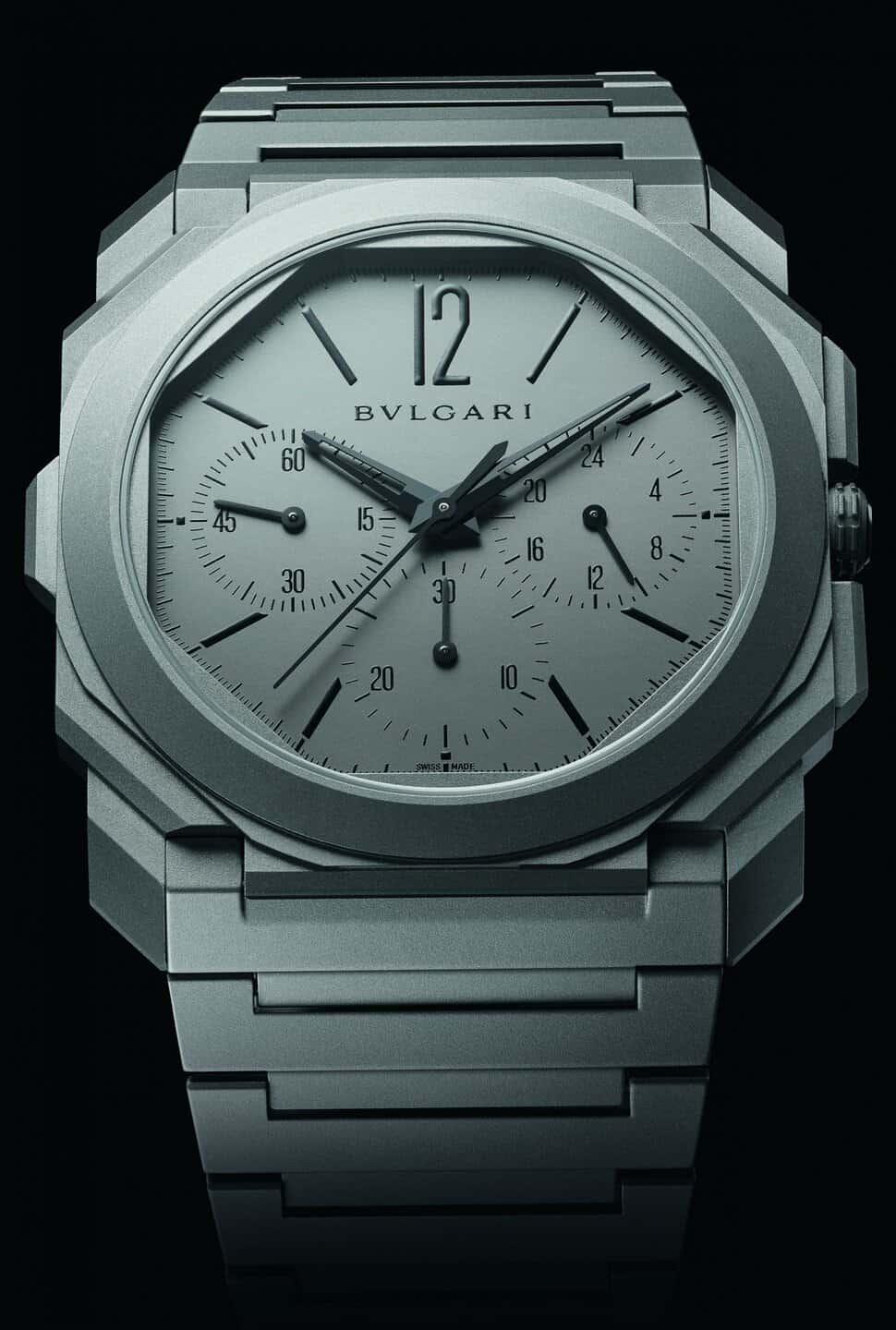
It’s difficult to know how much longer Bulgari can pursue its strategy of breaking records for thin movements and models before its watches become a physical impossibility. The Roman brand stole the slim mantle from under the nose of Piaget (which was traditionally the brand you went to if you wanted an ‘Extra Plat’ timepiece) and instigated an ongoing competition for the slenderest silhouettes between the two labels. Bulgari is back this year with the world’s thinnest automatic chronograph movement (3.3mm) which, thanks to the extraordinarily svelte sandblasted titanium Octo case, also becomes the world’s thinnest mechanical chronograph. If that weren’t enough, Bulgari has also added a GMT complication for good measure. The BVL 318 peripheral rotor movement is not some underpowered compromise – it boasts a healthy power reserve of 55 hours and features a pusher at the nine o’clock position to adjust the local time in one-hour jumps.
bulgari.com
Carl F. Bucherer Heritage Bicompax Annual Calendar Big Date, from £5,500
The current popularity of vintage watches and heritage-inspired designs has clearly not escaped Carl F. Bucherer – the watch brand owned by the same family behind Swiss watch and jewellery retailer Bucherer. Prompted by a visit to its own archive, the brand’s latest watch offers a fairly unique proposition on the current market, pairing not only a chronograph and annual calendar (which would be rare enough) but also a Grand Date display. Rather than using its own in-house movements, it has opted instead to call on the expertise of Sellita for its movement and Dubois Dépraz for a module containing an annual calendar and chronograph. The result is a comparative industry bargain – £5,500 for stainless steel and £8,000 for bimetal.
carl-f-bucherer.com
Chopard LUC Chrono One Flyback, £23,500
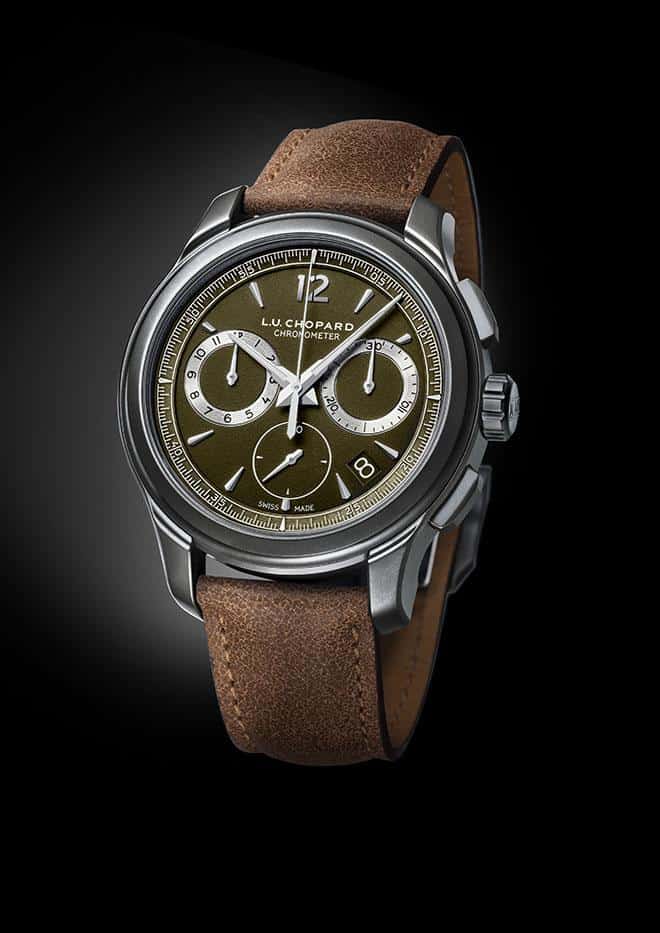
Chopard is a maison better known for producing highly inventive, finely decorated watches so this confident entry to the current trend for rugged, adventurous watches comes as something of a surprise. Unlike previous versions of the Chrono One series, this 42mm 100-piece limited-edition Flyback eschews precious metal in favour of Titalyt – a titanium hardened through ‘electro-plasma oxidation’ – for a dark-grey matte finish that shouldn’t scratch. The finish works well when paired with its olive green dial and distressed brown leather strap. If you’re unable to get your hands on the Titalyt model, there’s also a 250-piece stainless steel version with a slate-grey dial. Powering the watch is a movement that started life as the LUC 10CF when the Chrono One first appeared in 2006, before eventually evolving into the 03.03-L, a COSC-certified movement with 60 hours of power reserve.
chopard.com
Patek Philippe 5212A, £25,610
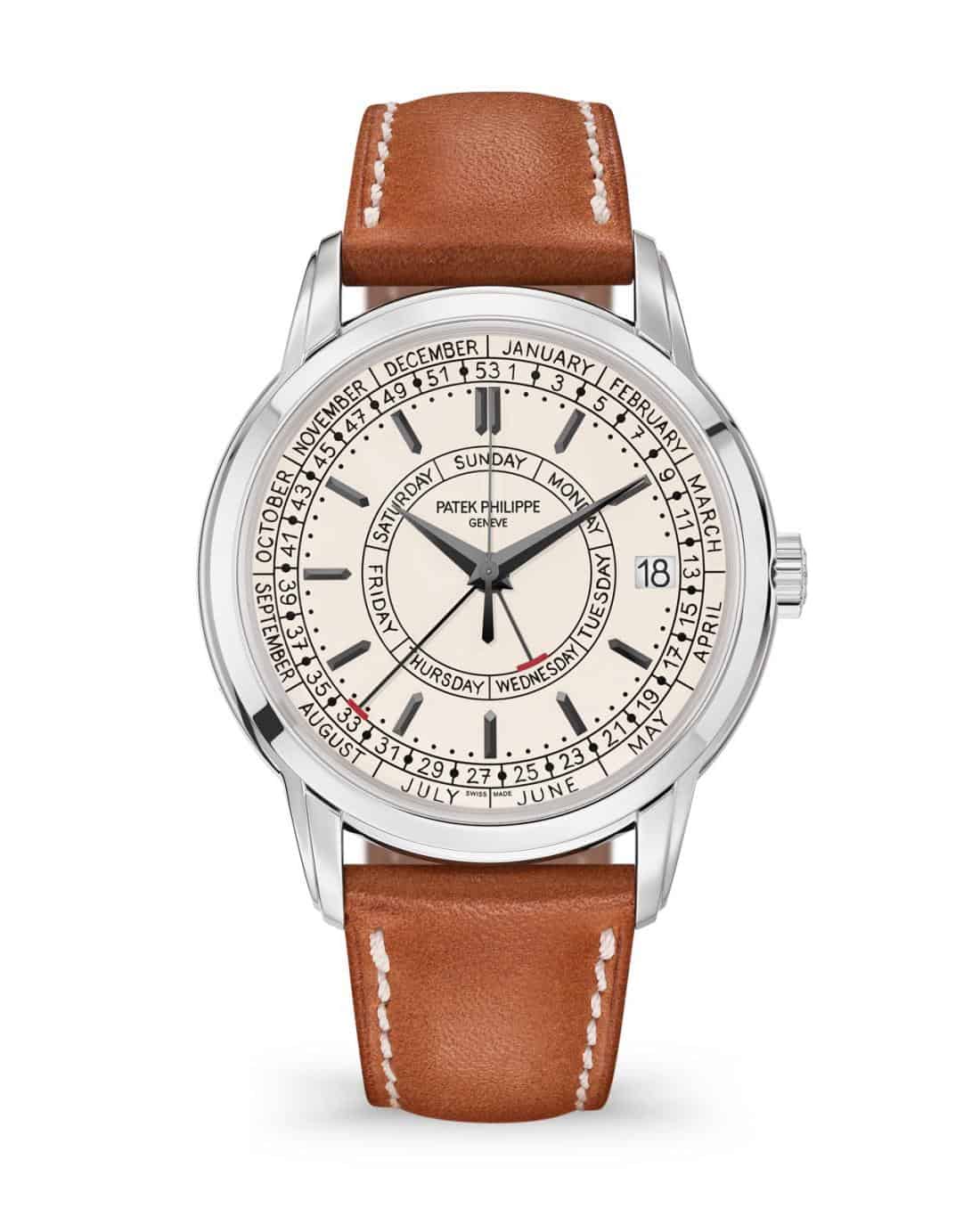
While the watch world seems to be losing its collective mind over the Nautilus and Aquanaut, here’s a welcome distraction: a quirky stainless steel Calatrava with weekly calendar pointer complication, blackened white-gold indices and hands, and a handwritten-style font on a dial positively loaded with data. It’s a dial design that doesn’t shy away from presenting a plethora of information, but rather embraces it and that’s precisely why it works so well. Patek’s new weekly calendar isn’t just a triumph of design, it illustrates the history of the brand’s exploratory watchmaking, something often overshadowed by talk of decoration and handcrafts.
patek.com
Urban Jürgensen One 5541 GMT, approx. £30,200

The sports luxe subgenre of watches, created when Gerald Genta designed the Audemars Piguet Royal Oak in 1972 and insisted that his steel creation was every bit as luxurious as anything made of gold, is in high demand at the moment. The Patek Philippe 5711A Nautilus is pure unobtainium, with waiting lists long closed, and demand for the Royal Oak is not far behind. While you could always pick up a Girard-Perregaux Laureato instead, a number of brands are about to enter the fray with their own interpretations of the steel sports watch. The first is Urban Jürgensen, a small maison with a traditional, slightly stuffy, image that it is trying to shed. The Jürgensen One is a bold entry, with its refined, highly polished case avoiding the mock utilitarian clichés of the category, saving its carefully plotted out use of geometry instead for its integrated bracelet, which was designed using intersecting circles – making it a genuine and credible alternative to the established heavyweights.
urbanjurgensen.com
De Bethune DB28GS Grand Bleu, approx. £71,750
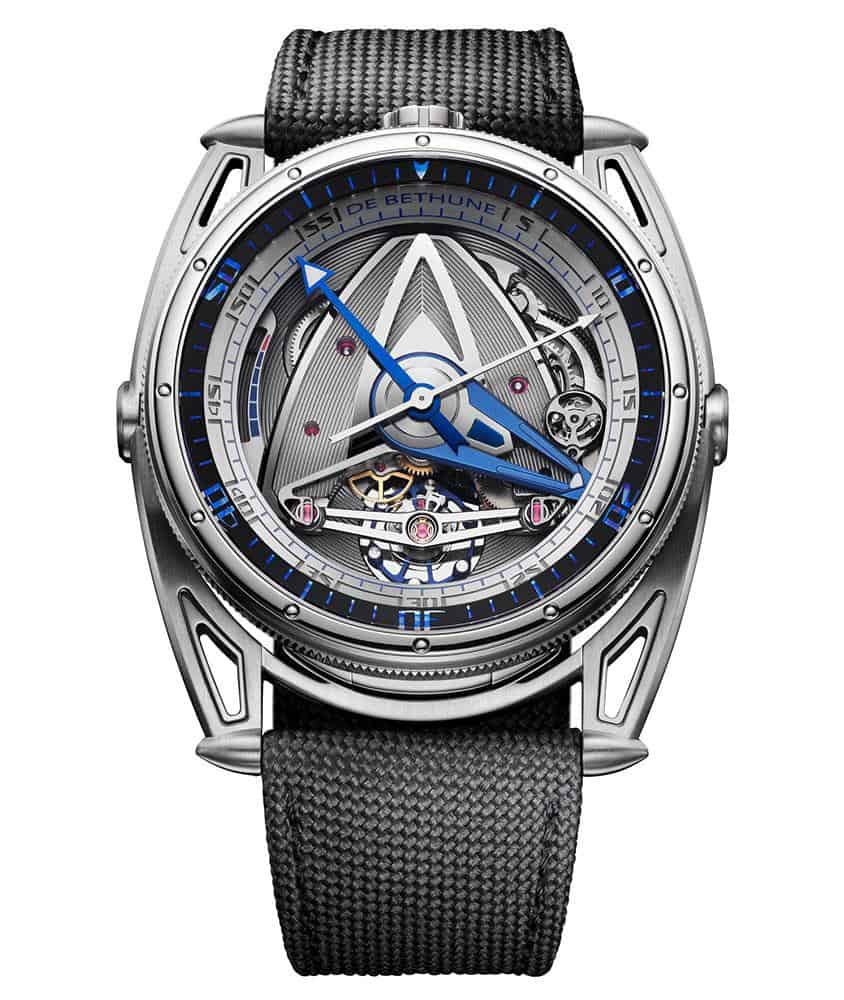
De Bethune is a master of avant-garde horology, elevating wristwatches into an art form – so it might not be on your shortlist the next time you’re in the market for a practical dive watch, but it should be. The new Grand Bleu is nothing short of sensational, with all of the brand’s established touchpoints present – the floating lug case design, the heat-blued, meticulously-finished components and sci-fi inspiration – and here De Bethune also adds a dash of technology. A separate gear train and dynamo powered by the twin mainspring barrels feeds four lights at the compass points via a pusher at the six o’clock position, bathing the dial and movement in a crisp blue-white light. The watch also includes the kind of features you’d expect from a more pedestrian diver; namely a rotating bezel and 105m water resistance – though props to anyone taking this into the water.
debethune.ch
Hublot Classic Fusion Ferrari GT, from £18,200
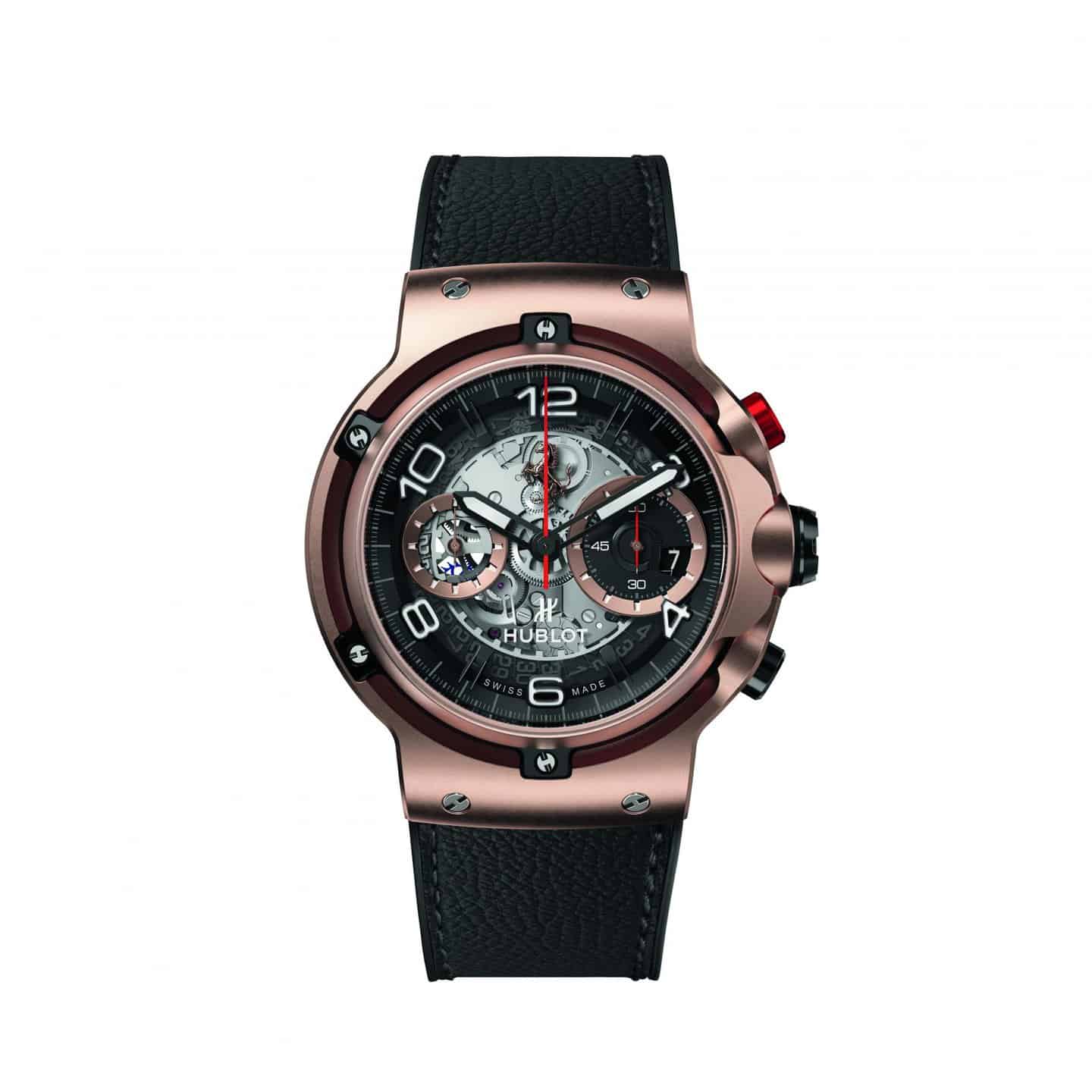
After decades of flitting between mismatched watch partners, Ferrari finally seems to have settled down, having found ‘the one’ in Hublot at a point where both of the brand’s design sensibilities had begun to move in close parallel. Now that relationship extends to Hublot allowing Ferrari’s style centre (or Centro Stilo) to design a watch for the luxury Swiss brand – the new Classic Fusion Ferrari GT. It’s immediately apparent that the watch, a chronograph housing the brand’s own UNICO automatic movement, owes its silhouette to the 2017 Hublot Ferrari Techframe, with its round central case suspended within an irregular exo-skeleton that houses the chronograph pushers and secures the watch body to its strap. But Hublot’s usual inorganic geometry is nowhere to be found, with the Ferrari GT presenting an undulating, curvaceous silhouette that sits well on the wrist. Our pick would be the titanium watch, but versions also exist in King Gold and carbon fibre.
hublot.com
